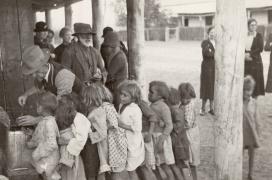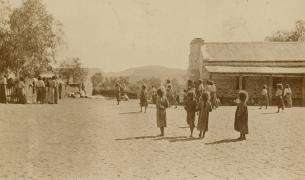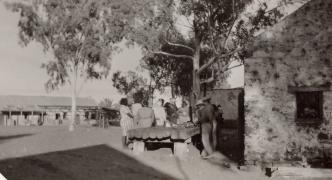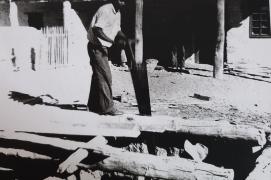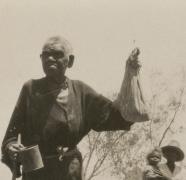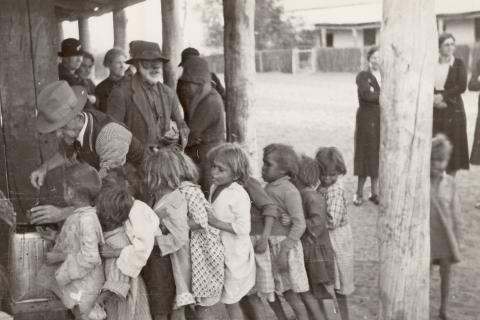“We must not overlook the fact that God has led us to work where we have to care for the body if we wish to have souls to be cared for."1
Originally known by the German ‘esshaus’, this building was constructed in 1903 as a 40’x20’ (approx. 12.2m x 6.1m) messroom for the Aboriginal mission residents2 during the period when Carl Strehlow was the head missionary. It was here that the children and old and infirm Aboriginal residents were fed.
Food was often scarce and meeting the nutritional needs of everyone was, sadly, not always possible. An Aboriginal resident recalls one occasion:
“Pastor Albrecht tell all the men, bring yelka, parltja, to eating house, all ladies send to get the rabbit, cook them and bring them in here. Not enough kangaroo in drought, no cattle here in drought, few skinny, skinny.”3
The building was constructed of sandstone and lime mortar and was whitewashed in 1911 and the floor replaced with stone flagging following a flu epidemic in 1919. In 1935, the western half was converted to use as a hospital and later to residential quarters for single staff and then later to a family residence. The eastern half served as a storeroom and distribution point for rations and clothing.
At some point, a kitchen wing was added to the western end of the building. By 1961, the building had been extended to measure 92’x23’ (approx. 28m x 7m).4
You can still see the bush timber shelves that have been retained in the eastern part, along with a small section of the flagstone flooring.
Much later, there was a saw pit in front of this building. It is now filled in, but it was here that Albert Namatjira cut the Mulga slabs that he used in his hot poker artwork.
- F.W Albrecht in Henson, B 1994 A Straight Out Man Melbourne University Press p159
- Ntaria Council and Domenico Pecorari & Associates Pty Ltd. 2003 Conservation and Management Plan Hermannsburg Historic Precinct
- Henson p 28.
- Radford, R., 1983 Report on the Social and Structural History of the Finke River Mission Buildings, Hermannsburg, Ntaria Central Australia. Unpublished report prepared for the National Trust of Australia NT, Darwin. p34
Media
